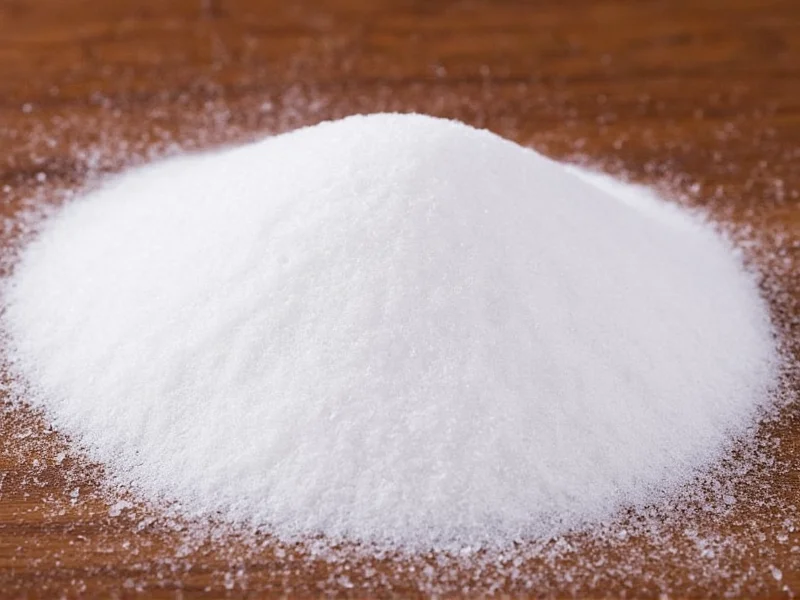Understanding the specific applications of coarse salt can significantly improve your cooking results and expand your kitchen versatility. Unlike finer salts, coarse varieties like kosher salt or sea salt flakes have distinctive properties that make them ideal for particular culinary techniques and household uses.
Defining Coarse Salt and Its Key Characteristics
Coarse salt refers to salt crystals that measure approximately 1-3 millimeters in diameter, significantly larger than the fine grains of table salt. The most common types include kosher salt (with its distinctive pyramid-shaped crystals), coarse sea salt, and rock salt. These varieties share several important characteristics:
- Slower dissolution rate compared to fine salt
- More controlled application due to larger crystal size
- Less sodium by volume than table salt (important for recipe adjustments)
- Distinct textural element when used as a finishing salt
- Free of additives like anti-caking agents (in pure varieties)
Primary Culinary Applications of Coarse Salt
Seasoning During Cooking
Professional chefs overwhelmingly prefer coarse salt for seasoning during the cooking process. The larger crystals allow for more precise control when seasoning by hand—you can literally feel how much salt you're adding. This is particularly valuable when what is coarse salt used for in cooking techniques that require gradual seasoning, such as:
- Rubbing meats before roasting or grilling
- Seasoning vegetables before roasting
- Adding to pasta water (the larger crystals disperse more evenly)
- Creating brines for preservation or flavor enhancement
Finishing Dishes
One of the most valued applications for coarse salt is as a finishing element. When sprinkled on completed dishes, coarse salt provides both flavor and texture. This technique works particularly well for:
- Steaks and grilled meats (creates a delightful crunch)
- Roasted vegetables (adds textural contrast)
- Chocolate desserts (creates a sophisticated sweet-salty combination)
- Homemade bread (adheres well to crusts)
- Salad dishes (distributes more evenly than fine salt)
| Salt Type | Best Culinary Uses | Substitution Ratio |
|---|---|---|
| Kosher Salt | General cooking, meat preparation, brining | 1:1 volume for most recipes |
| Coarse Sea Salt | Finishing dishes, baking, artisanal applications | 1:1.25 (use slightly less) |
| Rock Salt | Ice cream making, decorative salt crusts | Not recommended for direct consumption |
Non-Culinary Applications of Coarse Salt
Beyond the kitchen, coarse salt serves numerous practical purposes around the home. Understanding what is coarse salt used for outside cooking expands its value considerably:
Household Cleaning
The abrasive nature of coarse salt crystals makes them excellent for scrubbing without scratching surfaces. Mix with lemon juice or vinegar to create an effective cleaning paste for:
- Cleaning cast iron cookware
- Removing stains from cutting boards
- Scrubbing stubborn residue from pots and pans
- Cleaning coffee mugs and glassware
De-Icing and Traction
Rock salt (a coarse salt variety) remains one of the most effective and affordable solutions for:
- Melting ice on driveways and sidewalks
- Providing traction on slippery surfaces
- Preventing ice formation in gutters
Why Chefs Prefer Coarse Salt: The Science Behind the Preference
Professional kitchens almost exclusively use coarse salt, particularly kosher salt, for several scientifically sound reasons. When considering why chefs prefer coarse salt for seasoning, three key factors emerge:
- Controlled application: The larger crystals allow chefs to season by hand with precision—pinching and sprinkling with exact control over quantity.
- Dissolution rate: Coarse salt dissolves more slowly than fine salt, allowing for more even distribution in dishes with longer cooking times.
- Sensory experience: The texture of coarse salt creates a distinctive mouthfeel that enhances the overall dining experience when used as a finishing salt.
It's important to note that different coarse salts have varying densities. For example, Diamond Crystal kosher salt is less dense than Morton's, meaning you'd need to use more by volume to achieve the same saltiness. This is crucial knowledge when following recipes that specify a particular brand.
Common Misconceptions About Coarse Salt
Several myths persist about coarse salt that can lead to cooking errors. Understanding these helps maximize the benefits of coarse salt benefits for food preparation:
- Misconception: All coarse salts are interchangeable
Reality: Different coarse salts have varying crystal structures and densities, affecting how much saltiness they deliver per teaspoon. - Misconception: Coarse salt is always healthier than table salt
Reality: Nutritionally, they're nearly identical—sodium content per serving differs mainly due to crystal size, not composition. - Misconception: Coarse salt can't be used in baking
Reality: While fine salt dissolves more readily, coarse salt works well in many baking applications, particularly when mixed thoroughly with dry ingredients.
Practical Tips for Using Coarse Salt Effectively
To get the most from coarse salt in your kitchen, consider these evidence-based recommendations for how to use coarse sea salt in recipes:
- When substituting coarse salt for table salt in recipes, use approximately 1.5 times the volume of coarse salt
- For even distribution in dry ingredients, grind coarse salt slightly in a mortar and pestle before incorporating
- Store coarse salt in a moisture-proof container to prevent clumping
- Use different coarse salts for different purposes—keep one container of fine kosher salt for general cooking and a separate container of flaky sea salt for finishing
- When seasoning meats, allow coarse salt to rest on the surface for 40-60 minutes before cooking to enhance flavor penetration











 浙公网安备
33010002000092号
浙公网安备
33010002000092号 浙B2-20120091-4
浙B2-20120091-4